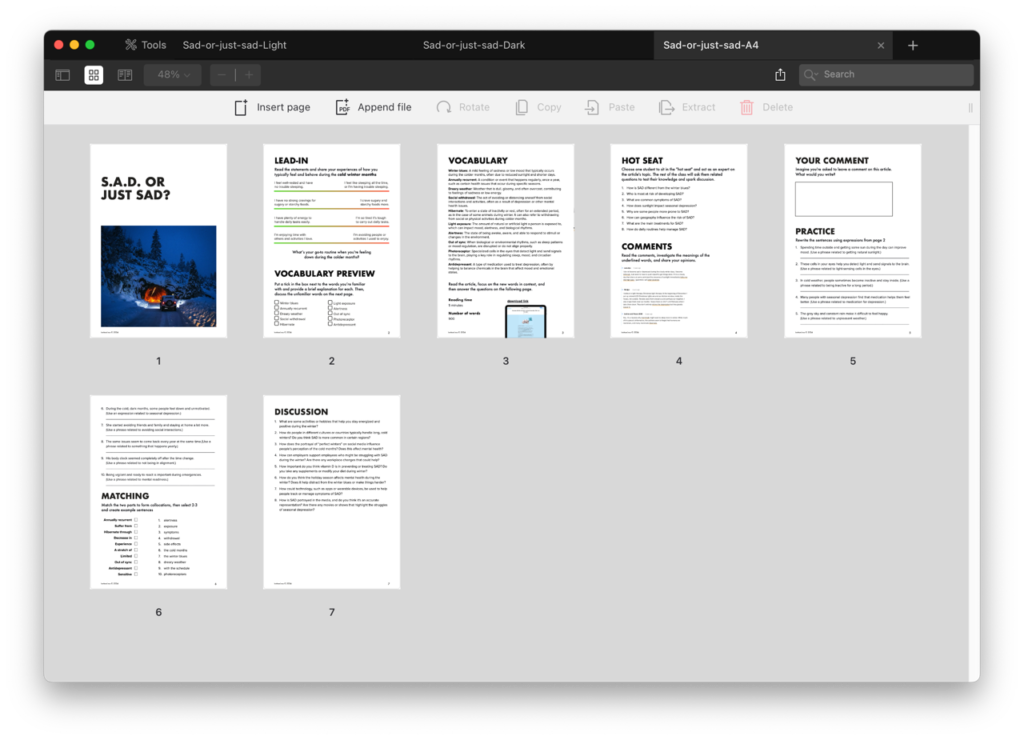
This C1 ESL lesson focuses on seasonal affective disorder (SAD), based on an article from The Washington Post. Students will explore the causes, symptoms, and impact of SAD, while expanding their vocabulary related to mental health and seasonal changes. The lesson includes discussion activities, reading comprehension, and vocabulary practice to deepen understanding and encourage critical thinking.
| Type | Level | Vocabulary | Reading time | Lesson time |
| Regular Lesson | C1 / Advanced | 10 words | 900 words / 5 min | 60-80 min |



Vocabulary
- Winter blues
- Annually recurrent
- Dreary weather
- Social withdrawal
- Hibernate
- Light exposure
- Alertness
- Out of sync
- Photoreceptor
- Antidepressant
Contents
- Lead-in 1
- Lead-in 2
- Vocabulary preview
- Vocabulary
- Article
- Hot seat Q&A
- Comments
- Your comment
- Practice
- Matching
- Discussion
Lead-In
In this advanced C1 ESL lesson, students begin by reading eight statements about how they typically feel and behave during the cold winter months. Each statement features a scale from green to red, allowing students to rate whether their feelings lean positive or negative. On the next page, they will reflect on and share their go-to routine when feeling down during winter, deepening their personal connection to the topic.
Vocabulary preview, Vocabulary
The vocabulary preview page introduces 10 key words from the article. Students will check the box next to the words they know and provide brief explanations. For the unfamiliar words, they will discuss them on the following two pages, with assistance provided to ensure comprehension and additional examples given when needed.
Article, Hot seat Q&A
The article on seasonal affective disorder, published by The Washington Post, is around 900 words with an estimated reading time of five minutes. Students should read it carefully, focusing on new vocabulary in context, and then answer the questions on the next page. In the “Hot Seat Q&A” activity, one student will be chosen to sit in the hot seat as an expert on the article’s topic, while the rest of the class asks questions to test their knowledge and engage in discussion.
Comments
The comments section features three responses from the article. Students should read them, analyze the meanings of the underlined words, and share their opinions in a follow-up activity. Encourage your students to leave a comment on the article as well.
Practice, Matching
The practice section consists of two activities. In the first, students rewrite 10 sentences using expressions from page 4, following the clues in the brackets. The second activity is a matching exercise, where students pair parts to form collocations and then create example sentences using two or three of them.
Discussion
The final page in this lesson features discussion questions which could be a great extension to discuss this topic in depth there are a detailed questions giving you a possibility to deep dive into the topic however, if you want, you can make this discussion, optional or at any stage of your lesson
